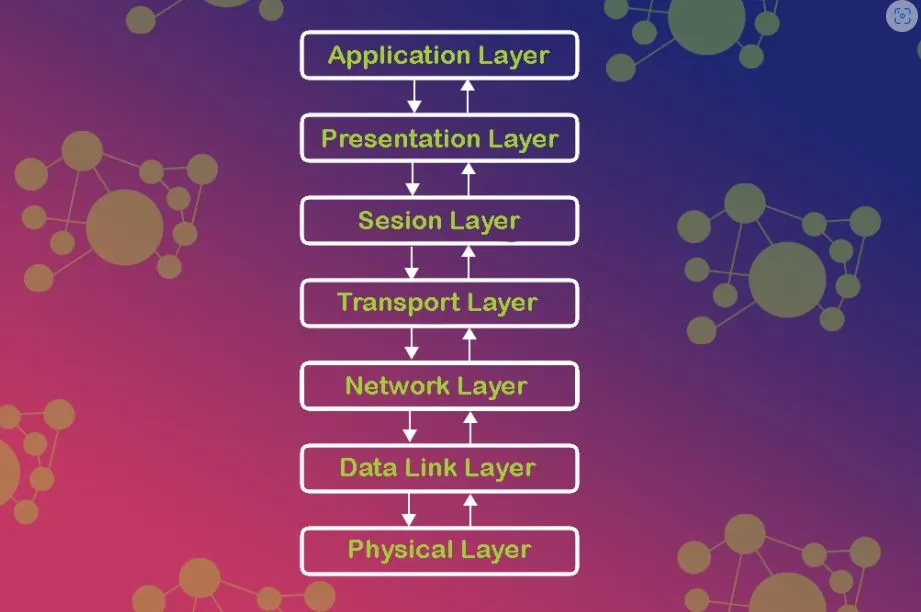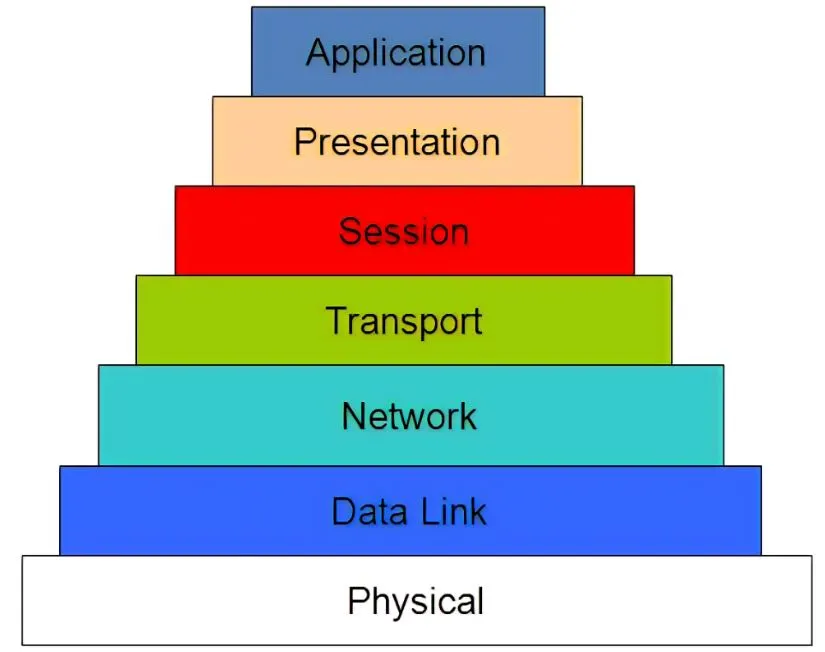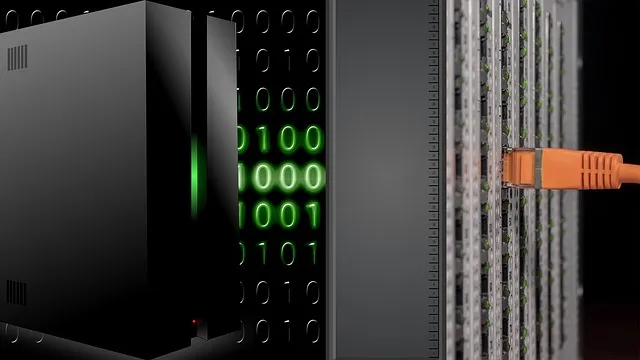What is OSI Layer: Definition, Functions, and How it Works
The development of digital technology makes the communication process easier. One of them is thanks to the OSI Layer on the use of technology and computer networks. But do you know what is OSI Layer?
The OSI layer is one of the components of a computer network, thanks to this computer network that allows us to communicate over long distances easily. The development of technology is able to make human activities more efficient. An example is sending a message via email.
The OSI layer includes systems that play an important role in the delivery process, so that messages sent by A through their devices will arrive or be received by B on their devices as well.
Table of Contents
What is OSI Layer?

Open Systems Interconnection or OSI is a reference model which is created in the form of a conceptual framework. The OSI layer is a conceptual model designed by the International Organization for Standardization (ISO) to standardize various communication systems to communicate with each other using standard protocols.
The OSI layer is a standard created to allow various computers to communicate with each other. So that the process of communicating and exchanging data between devices will become easier and more effective.
Read: What is a Gateway and its Function on a Computer Network
In general, each device has a different method and means of communication. For example, computer brand X has a different way of communicating with Y, so computer X can only communicate with the same brand
The difference in the way of communicating will make the process of exchanging data difficult to do. Because each device has its own protocol which is not necessarily compatible with each other.
Therefore, a standardization is needed to be able to unify all these network systems. In addition, it was created also to fulfill a specific purpose. The goal is that the OSI model becomes a reference for every vendor or developer so that the software and products they make have an interpolate nature.
Thus, users do not have to make special efforts and they can cooperate with the system or product. This will certainly make it easier for computer or device users to transfer data to other devices.
OSI Layer Functions on Network
After knowing what is OSI Layer, you also need to know the function of the concept. The goal is that you can have a more complete and optimal understanding of OSI as well as other detailed information in full.
In its journey, computer manufacturers and internet network developers did not apply the OSI layer model protocol by default. Because not all processes need the OSI layer and can use simpler protocols.
Read: What is Hardware? Definition, Functions, and Types
But the concept also can not be abandoned. This procedure model is still widely used, especially in tracking problems that result in network failure. So, it will be resolved immediately and communication will return to normal.
The function of the OSI layer concept is to facilitate the process of finding the starting point of the problem, thereby minimizing the time needed to trace network problems. That way, network problems can be solved more easily.
7 OSI Layers

Knowing what is OSI layer is not enough to understand the world of computer networks. Because you also need to know the layers that are owned by the OSI. The OSI layer itself works through seven successive layers.
When a person cannot access the internet with his device, it is because there is a problem that might occur in one of the layers. For your information, here are the 7 OSI layers you need to know about:
1. Physical Layer
You could say that this physical layer is the most important. The responsibility of this OSI layer is in terms of transmitting data bits. The type of signal used is not arbitrary, thus enabling good signal reception.
The type of signal must also be supported by physical media, such as cable, infrared, ordinary light, radio frequency, and electric voltage. After this layer completes its task, it will be forwarded to the second layer for processing at the next stage.
2. Data Link Layer
The next OSI layer is the Data Link Layer. This section is the second layer of OSI that is useful in the data transmission process. When the data transmission process is in progress, there will be potential for errors to occur.
So this is the responsibility of the OSI data link layer service layer where its job is to do error checking. So that the potential for errors in the data transfer process can be minimized.
Read: 13 Examples of Computer Hardware and Their Functions
The data link layers in the OSI sequence also have the responsibility of wrapping the bits into a data frame. In addition, the data link layer can also manage physical observation schemes such as MAC addresses on a network.
You could even say this data link layer is one of the most complex among the other layers. This is the reason the data link layer is divided into 2 sublayers, namely MAC (Media Access Control) and LLC (Logical Link Control).
The job of a MAC is to control which devices from a network get access to the medium and also permissions when transmitting data. While the LLC is in charge of identifying the data and then wrapping the network layer protocol and also controlling the error checking.
3. Network Layer
The third type of layer is the Network Layer. Among the 7 OSI layers that exist, the network layer has the task of doing routing. This makes each computer finally able to connect to 1 network. Not only that, the network layer also functions to perform the routing process and create headers for existing data packets.
4. Transport Layer
The fourth level in OSI is the Transport Layer. Why is it called the transport layer? Because this layer has a role to channel bits. So that sending messages between 2 or more hosts on the network, then this is the responsibility of the transport layer.
In addition, it also handles the splitting and merging of messages and then also performs control for the reliability of the connection path that has been given. There are several specific functions that are owned by the Transport Layer, namely:
- Solve the data to be entered into several data packages
- Perform data transmission from session to network layer
- Each existing packet will be numbered by this layer, making it easy to reorder
- Looping the transmission process in the lost data packet
The existence of the Transport Layer section will allow data to be routed from the server to the user without any disturbance.
5. Session Layer
The fifth layer is the Session Layer. The responsibility of the session layer is to control the session connection dialog and also manage and even disconnect from the computer. Even this layer can also disconnect the internet connection on a computer. Examples of protocols at this layer are NFS, RTP, SMB, and others.
Read: What is a Switch: Definition, Type, and How it Works
In order to establish a communication session, a virtual circuit is used which is created by the OSI layer called the transport layer. In addition, the session layer also manages checkpoints during the transfer process, if the session is interrupted, the device can continue data transfer from the last checkpoint.
6. Presentation Layer
The sixth layer in OSI is the Presentation Layer. This sixth layer is responsible for preparing data for the application layer, and instructs how two devices should encrypt, compress, and compare data.
So that the data sent can be received correctly later and can be used by the user. The presentation layer takes the data sent from the application layer and prepares it for transmission through the session layer.
At this layer, there are protocols called Multipurpose Internet Mail Extensions (MIME), Secure Socket Layer (SSL), Transport Layer Security (TLS). At the presentation layer, the data will be encrypted and decrypted automatically through the system.
7. Application Layer
The last layer of OSI is the Application Layer. This section is the only layer that interacts directly with the user and provides protocols that allow software/applications to send and receive information to the user.
The application layer in OSI is the center of an interaction between users and applications that work using the functionality of a network. Some examples of application layer protocols are Hypertext Transfer Protocol (HTTP), File Transfer Protocol (FTP), Post Office Protocol (POP), Simple Mail Transfer Protocol (SMTP), and Domain Name System (DNS).
How OSI Layers Work

Now that you know what is OSI layer and what layers it has, now you need to also know about how OSI works. In order to understand how the OSI layer works, you can imagine the stages of the process as in the process of sending a letter.
Read: What is a Server: Definition, Functions and Types
In order for the letter to be sent properly to the recipient, then of course it must go through certain procedures or stages. The following are some general steps about how the OSI layer works that you need to know:
- Application layer will send the data sent by the user on the computer receiving the data.
- There is a conversion of email into a network format at the presentation layer.
- At the session layer, a data journey session will be formed until the entire data transmission process is completed.
- The sender performs data splitting at the transport layer, and reassembled at the receiving transport layer.
- The network layer creates an address to direct data to its destination correctly.
- Will be carried out the formation of data into the form of frames and physical addresses in the data link layer.
- At the physical layer, the main layer, data will be sent through the network intermediary to the receiving transport layer.
- The process flow will be reversed and repeated from the physical layer to the application layer until it leads to the user’s computer network.
Through this mechanism, the data exchange process will be carried out safely and effectively. In addition, with the encryption process that occurs in OSI, the transmitted data will be more secure and kept confidential.
Conclusion
The OSI layer is a conceptual network standard that allows us to finally communicate with each other through existing devices. With this Open System Interconnection, you can communicate with friends smoothly even though you are in two different places and are geographically separated.
In general, there are 7 layers in OSI. Each layer certainly has a different function in the data transfer process. Each of these mechanisms is interconnected so that data can be transmitted safely and also in an effective manner.
That’s a complete discussion of what is OSI layer is that you need to know. Now with this article, I hope you can understand more fully and in detail about the OSI layer, its functions, layers, and also how they work.
